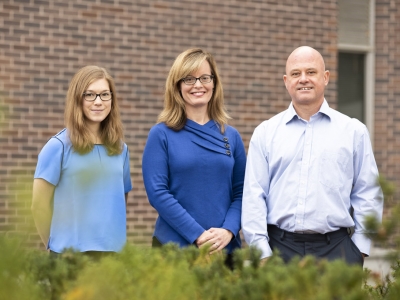By Dan Rubinstein
How do you convey 75 years of memories in 75 photographs?
You start with 60,000 images, and talk to a lot of people. Then, after sifting through photos and soliciting personal stories for months, you package the words and pictures together in a keepsake book that distills the evolution of a dynamic community into 75 iconic images.
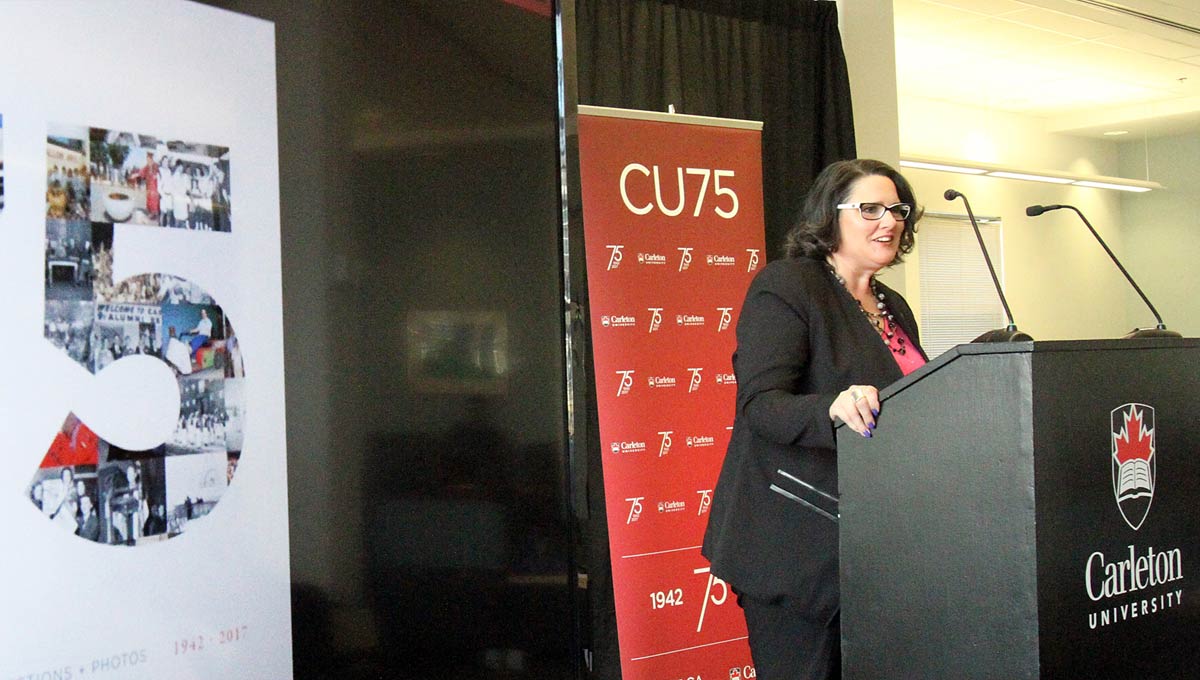
Patti Harper, head of the MacOdrum Library’s Archives and Research Collections
Carleton at 75, subtitled Reflections + Photos, 1942 – 2017, is a gorgeous and engaging hardcover that fills a unique niche in the university’s 75th anniversary celebrations. Rather than create an official institutional history of Carleton, the people behind the project — members of the 75th Anniversary Academic Events Planning Subcommittee (AEPSC) — decided on this elegant and intimate format.
Each two-page spread is comprised of one large image, an anchor word or phrase (such as “Winter” or “Our Blues Brother”), and a written reflection that was either contributed by someone from the Carleton community or gleaned from the university’s archives.
This approach was conceived by Patti Harper, head of the MacOdrum Library’s Archives and Research Collections. Harper had always wanted to work on a photo book, and two years ago she showed a copy of the Historica Canada publication 100 Photos That Changed Canada to Margaret Haines, the now-retired university librarian who was on academic leave at the time.
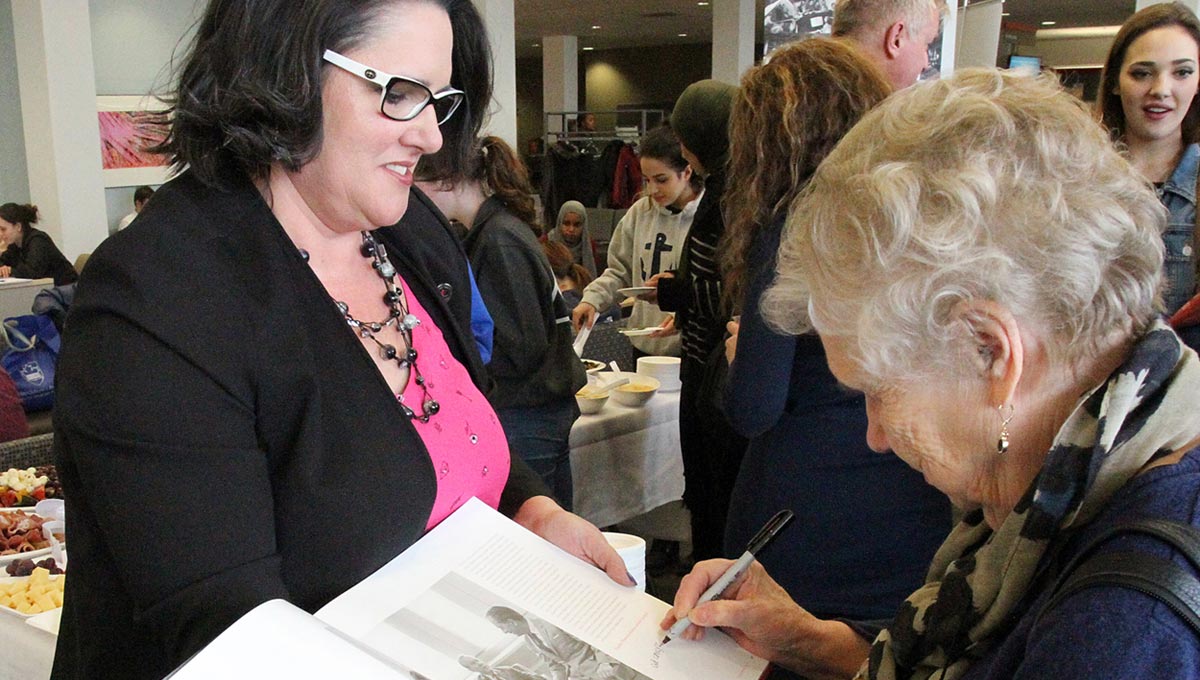
Carleton at 75 Showcases
Campus Transition
“I wanted to use pictures and personal reflections to show our progress from a small college into a vibrant and diverse university,” says Harper, who pitched the idea and received enthusiastic support from the AEPSC, which is co-chaired by Haines and Associate Vice-President (Teaching and Learning) Joy Mighty, and reports to the overarching 75th Anniversary Steering Committee chaired by Vice-President (Academic) Peter Ricketts.
“We wanted something that showcased the entire community, not just faculty, staff and students, but also alumni and Carleton’s involvement with the public,” says Harper.
“We wanted to avoid using headshots of individuals and super popular photos that have already been seen widely. We wanted to be inclusive and representative of what Carleton really is. And we wanted to produce a book because, in our disposable society, digital images are easy to lose track of.”

Dean of Public Affairs, André Plourde
Harper spent about four months looking at physical photos and digital images for Carleton at 75, which will be available online for $50, as well as in person at the Carleton Bookstore and at select anniversary events throughout 2017. It was officially launched on campus on March 29.
After she had narrowed down the selection to 150 photos, her AEPSC colleagues helped her settle on the final 75, which stretch from the early days of the university in the 1940s to the contemporary campus.
Many of the photos, such as a shot of a gym full of students writing exams, elicit an immediate, visceral response.
“What feeling do you get when you see that one?” asks Harper.
“Anxiety, right? Exactly! That’s what we wanted these pictures to do. Well, not to make people anxious, but to stimulate a strong feeling.
“Each photo is a snapshot in time,” she continues. “Each image means something different to just about every viewer, and the reflections that accompany them convey some of those memories and nostalgia. Including those personal reflections was crucial — they’re an important part of Carleton’s history.”
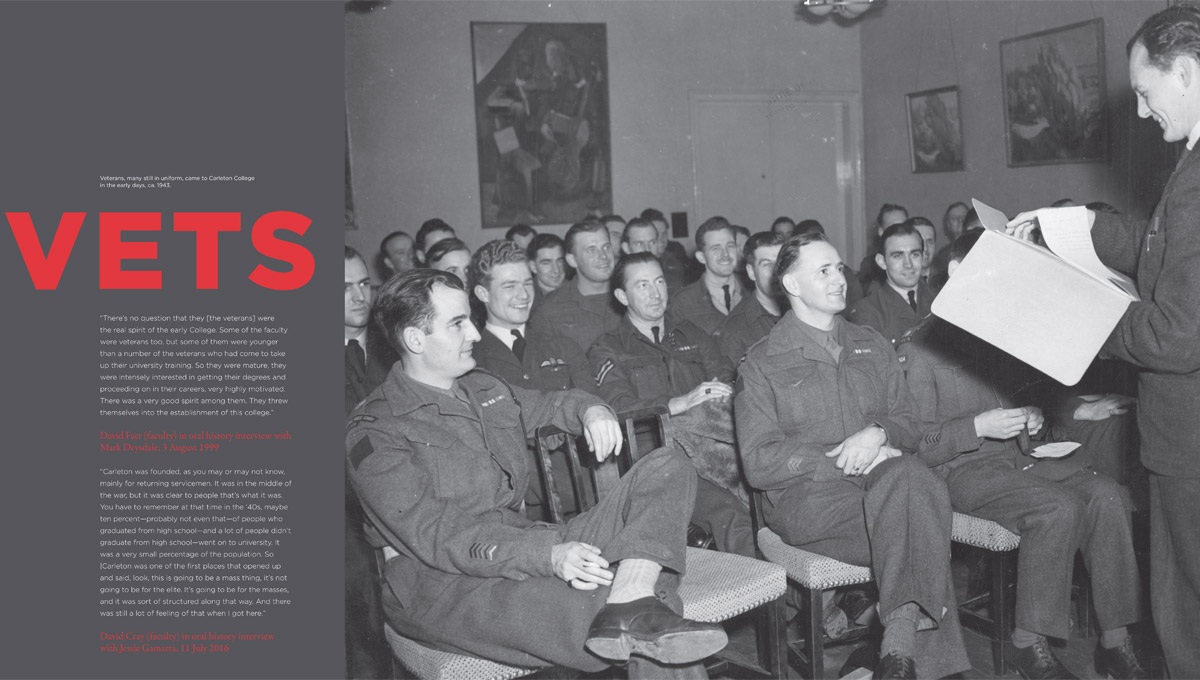
Assembling Written Reflections
Haines and other members of the AEPSC helped Harper assemble the written reflections, drawing on their networks of contacts to supply passages that spoke to specific photos.
“It was really challenging,” says Haines, who quips that the committee used a very academic process to put together a collection of informal personal memories. “In the end, it’s a very engaging and user-friendly book that really captures the spirit of this place. That’s what we were hoping to do from the start.”
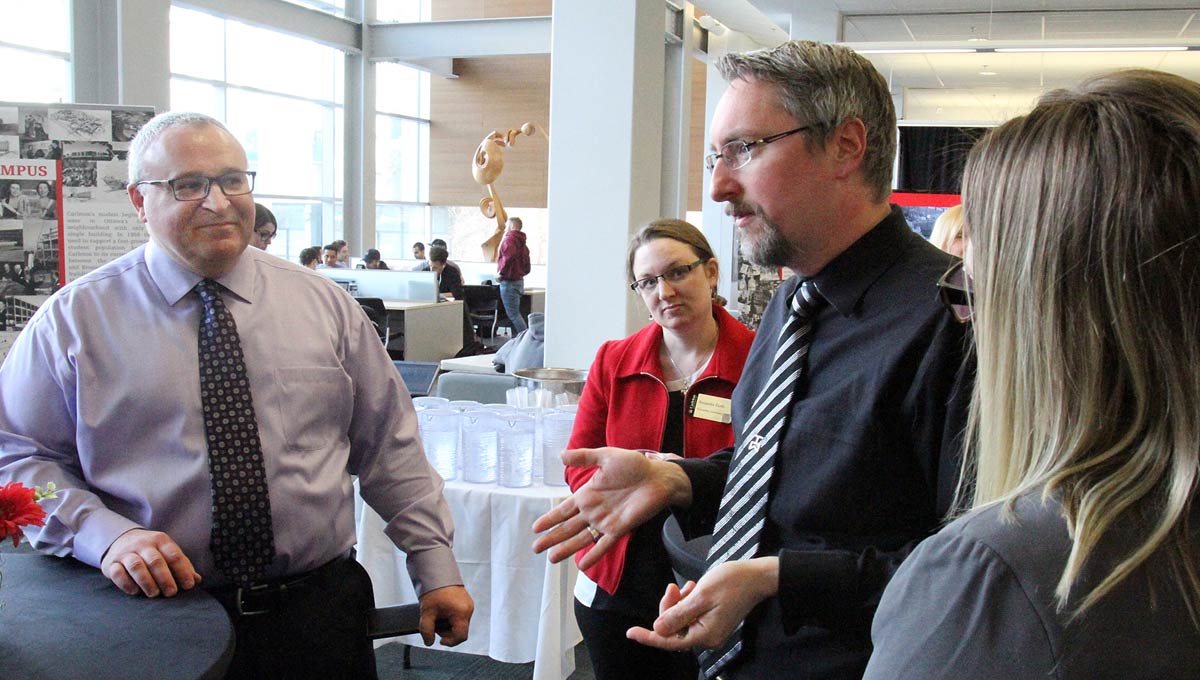
Carleton faculty and staff discuss the book at the Carleton at 75 launch event.
Haines was an undergraduate student at Carleton in the late 1960s and a longtime staffer, as well as an Ottawa resident for much of her life. “This book really gets at what Carleton means to me,” she says. “I’m delighted to see so many different people associated with the university, and so many different aspects of campus life, reflected in its pages.
“Studying beside the river, sunbathing in the quad, walking through the tunnels — I’m glad the books includes so many moments like this.”
Greg MacDonald, Carleton’s head of Creative Services, was called upon to lead the design side of the project.
Inspired by Andrew Zuckerman’s photo book Wisdom, MacDonald wanted to create something substantial that looked and felt like it would be worthy of space on anybody’s coffee table.
“We wanted something artful and impactful,” he says of the hefty 12-inch by 12-inch book, which features high-end paper and a die-cut cover.
“Artistically, we approached it as a non-linear story, as a series of spreads — with each spread standing on its own as a potential landing point.”
MacDonald commissioned Ottawa designer Mario Scaffardi to do the layout, and served as a liaison between the AEPSC and Scaffardi, whose resume includes a lot of large-visual museum work.
“I’m thrilled with the end result,” says MacDonald. “The book is an extension of the way we’ve been trying over the last few years to tell Carleton’s stories in a bigger and bolder way.”
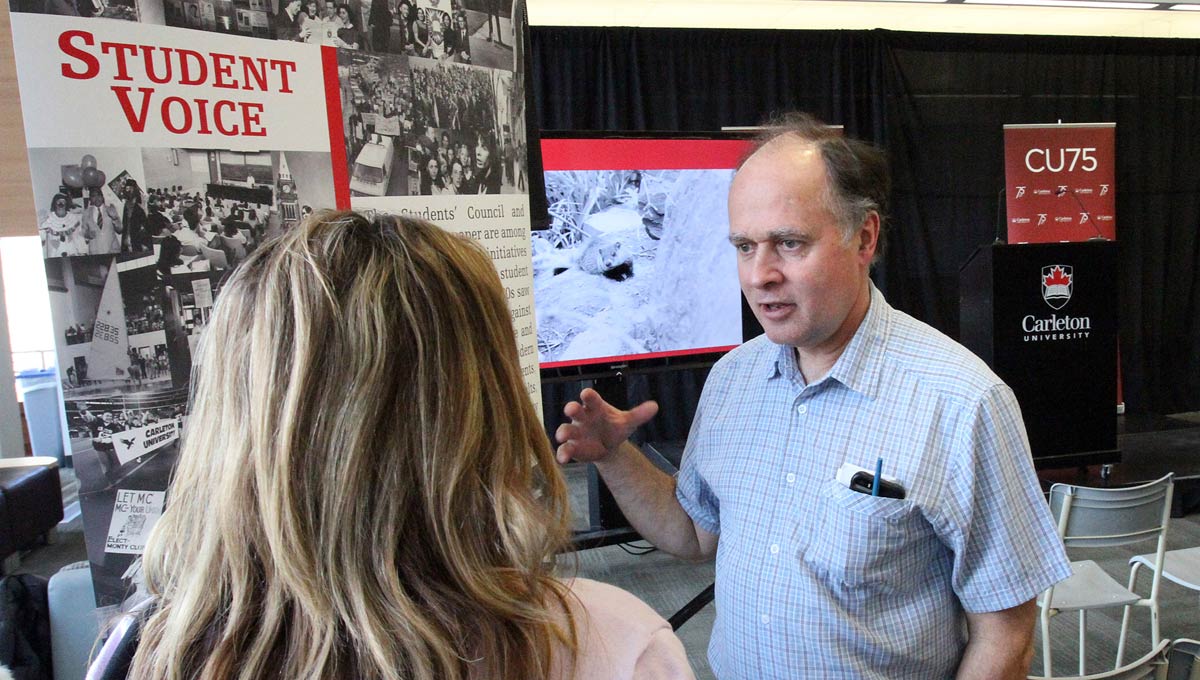
Visualizing 75 Years
Some stories, on the other hand, warrant a more granular approach. Which is why Sherri Sunstrum, a cartographic specialist at the MacOdrum Library, has also tapped into Carleton’s rich trove of archival images to produce an interactive online story map called Visualizing 75 Years at Carleton University.
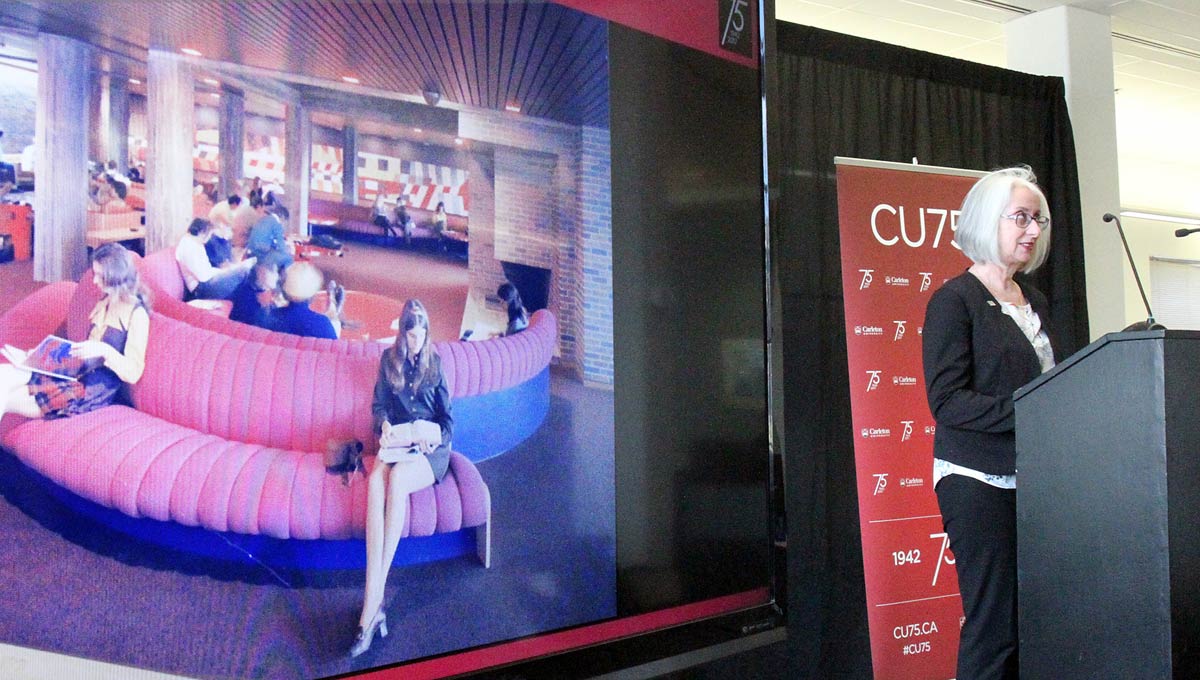
Alumna Mary Capson shares her reflection at CU75 book launch.
The story map, which was unveiled at the official 75th anniversary launch event featuring rapper Maestro Fresh Wes on Jan. 18, uses a series of maps to allow people to navigate through an image-rich timeline detailing the evolution of Carleton.
It brings together not only key pieces of the university’s historical narrative, such as the construction of new buildings and Carleton’s connection to Canada’s war vets, but also smaller, lesser known (and less laudatory stories), like the time a group of students who wanted a Christmas tree cut down a rare fir across the canal at the Dominion Arboretum.
Visualizing 75 Years is still developing as Sunstrum continues to gather information about the university’s past. It could be on display on large screens at other anniversary events.
“Putting this together was a great experience,” says Sunstrum.
“It tells the story of Carleton in a unique way.”
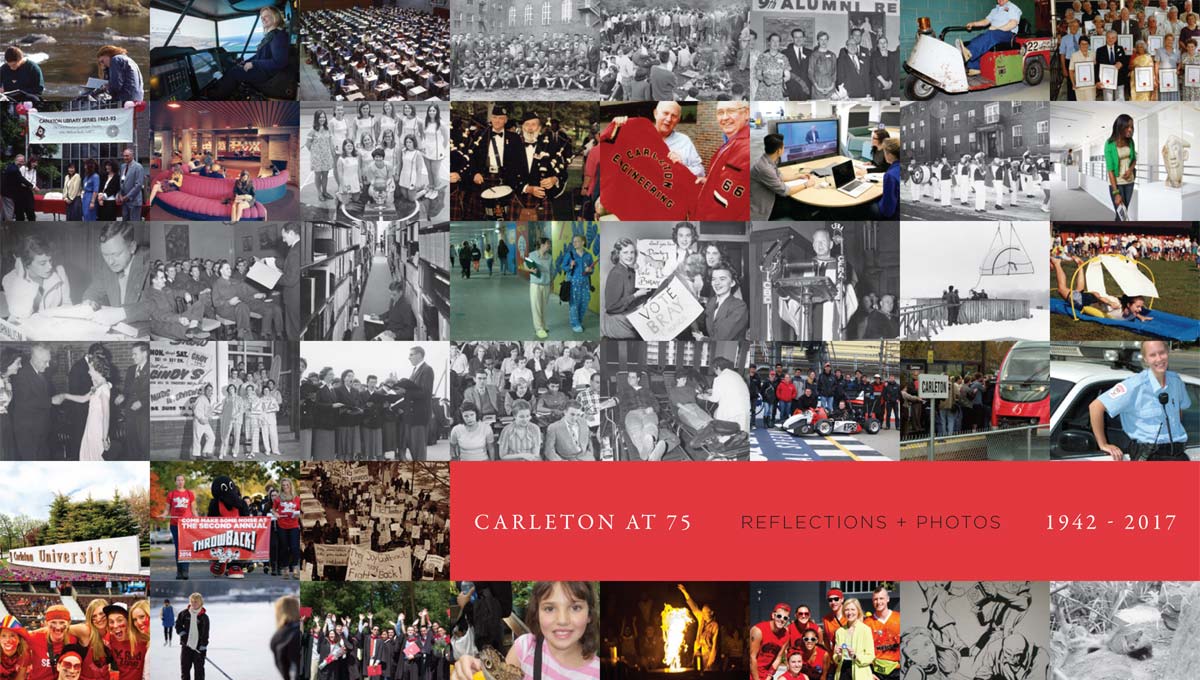
Thursday, March 30, 2017 in Community, CU Anniversaries, Events
Share: Twitter, Facebook

